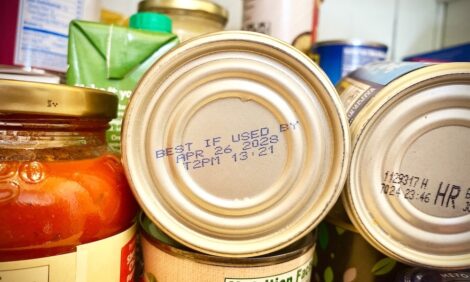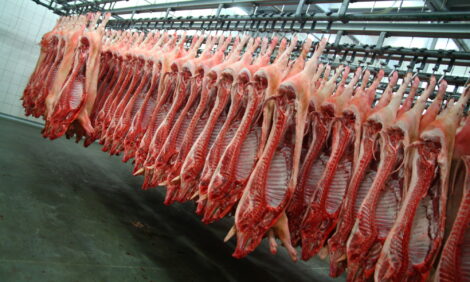



Dutch Swine and Pork Report, September 2001
By U.S.D.A. Foreign Agricultural Service - This report looks at the present status of the Dutch pig sector and highlights the whole Dutch livestock sector was severely hit by the BSE and FMD crisis mainly due to export restrictions and reduced demand in export markets.Executive Summary
During 2000, pig stocks declined by 2.4 percent to 12.8 million animals due to environmental restrictions and a related purchase program for the Dutch government. Despite the improved world market for pork, Dutch pork exports declined due to lower domestic production. Stocks were further reduced by the FMD crisis. Nearly 120,000 pigs were killed. Since the FMD crisis ended, exports of live pigs have resumed and reportedly surged to Germany and Italy. Preliminary figures of the Product Board reveal a reduction of fifty percent in pork exports during the first half of 2001.Policy and Marketing
The Dutch livestock sector was severely hit by the BSE and FMD crises mainly due to export restrictions and reduced demand in export markets. The Dutch livestock sector depends on exports for more than fifty percent of sales and is thereby very sensitive to consumer concerns in these markets. The Dutch government ’s ambition is to rebuild consumer confidence and change the image of the Dutch livestock sector from that of an intensive producer to a quality producer. The Product Board for Livestock, Meat and Eggs (PVE) has developed a quality assurance system to ensure food safety and traceability. Furthermore, the PVE supports consumer labeling and aims to produce with non GM feeds, if requested and feasible. The PVE expects that, even with pressure on suppliers, about two years are needed to have a viable supply of non GM ingredients for feed.Pork Production
The Netherlands - Swine - May Livestock Census (1,000 Head) |
||||||
| 1997 | 1998 | 1999 | 2000 | 2001** | 2002** | |
| Total Number of Pigs of which: |
15,189 | 13,446 | 13,567 | 13,118 | 12,650 | 12,500 |
| piglets up to 20 kilos | 5,996 | 5,094 | 5,239 | 5,104 | 4,900 | 4,700 |
| slaughter hogs | 7,433 | 6,591 | 6,774 | 6,505 | 6,300 | 6,100 |
| breeding hogs | 1,761 | 1,760 | 1,554 | 1,511 | 1,450 | 1,400 |
| *December livestock census **OAA projections Source: Central Bureau for Statistics (CBS) | ||||||
In 2000, the Dutch Minister of Agriculture, Laurens Brinkhorst, introduced a program by which subsidies are given to pig and poultry farmers who are closing down their farms. A large number of farmers used the opportunity to sell their farms. The December 2000 CBS livestock census revealed a decline of pig stocks by 2.4 percent, to 12.8 million animals. The number of breeding hogs declined by 2.8 percent which points to a further reduction in 2001. By the end of June, the final number of animals killed in the controlled areas due to FMD outbreaks was estimated at 266,155 head, of which 118,360 were pigs.
During 2000, the slaughter of hogs declined 5 percent to 18,600 animals, due to shrinking pig stocks in The Netherlands. Due to the shortage of pigs for slaughter, slaughterhouses are facing over capacity. During the first quarter of 2001, the slaughter of hogs was restrained by transport restrictions during the FMD crisis. Since the end of May, exports of live cloven hoofed animals resumed and surged to Germany and Italy where they were slaughtered. It is expected that the domestic slaughter will remain under the level of the previous year.
Consumption
During the year 2000, household purchases of pork declined by 5 percent supposedly due to relatively high prices. Meat consumption by Dutch consumers is primarily price driven. For more information on Dutch meat consumption see the chapter on cattle, beef and veal.Trade
ImportDuring 2000, the value of Dutch imports of swine and derived meat products grew 22 percent to EURO 0.32 billion. Before 1999, the Dutch imports of live pigs were limited but they grew to 515,000 head in 2000. The rise in live pig imports, which consists mostly of slaughter hogs (464,000 animals), is explained by the need of the Dutch slaughterhouses to try to use excess capacity and low domestic supply. Dutch imports of pork meat increased 7 percent to 134,000 MT in 2000.
Export
The Netherlands is one of the world’s five largest exporters of live pigs and pork, despite increasing restrictions by the Dutch government. During 2000, the value of Dutch exports of swine and derived meat products increased 20 percent to EURO 2.16 billion. In 2000, Dutch exports of live pigs rose by 8 percent to 4.6 million animals, mainly due to increased exports of piglets (3.2 million). The strong export of piglets is explained by an over supply of piglets in The Netherlands. As result of lower domestic supply of slaughter hogs, Dutch exports of slaughter hogs declined 3 percent to 1.4 million, main markets were Germany (40%), Spain (22%) and Italy (17%).
The world market for pork improved considerably during 2000. EU pork production declined and while demand in Eastern Europe, Russia and the Far East grew. Dutch exports, declined 3 percent, due to the decline in domestic production. A further reduction in exports is expected, especially to Greece and Italy, due to the increasing prices of Dutch pork. Dutch pork exports to the UK benefited from the lower production in the UK and the strong British Pound. Dutch bacon exports to the UK rose from 126,000 MT to 134,000 MT in 2000. In Japan, although demand for pork is growing, Dutch exports declined 34 percent to 12,800 MT due to increased competition from the US and Denmark.
Due to FMD outbreaks, exports of live cloven hoofed animals were prohibited during mid March - mid May 2001. During the first 24 weeks of 2001, Dutch exports of slaughterhogs and piglets declined by 4 and 60 percent, respectively. Preliminary figures of the Product Board reveal a reduction of fifty percent of pork exports to 170,000 MT. Since the end of May, the ban on exports of cloven hoofed animals was released. Due to the limited domestic slaughter capacity and the large stock of animals the open EU boarders led to intensive exports of live slaughterhogs, especially to Germany and Italy. Dutch pork exports are expected to recover from the FMD crisis, partly due to lower supplies in the UK and Spain.
Policy and Marketing
EnvironmentIn The Netherlands, intensive animal farming is constrained by environmental measures. On December 15, 2000, the parliament discussed the function and destination of the Dutch landscape (living, recreation, farming, nature etc.). It is anticipated that new measures will stop the further expansion of intensive animal farming, especially in natural areas. To reduce the present surplus of manure (21.5 million MT of phosphate), the Dutch government is allowing pig and poultry farmers to sell their farms to the government. In November 2000, the Ministry of Agriculture ended the first round of the buy-out program. The government bought a total of farms which would have produced 2.7 million MT of phosphate. The LEI expects that this will give their EU competitors cost advantage.
In January 2000, various organizations in the pig sector (such as the PVE), the Foundation Nature and Environment and Platform Biologica, a government organization to support Dutch organic production, agreed to cooperate to expand the organic stock of pigs to a total of 470,000 in 2005. Currently only about 0.6 percent of the pork supply is organic in The Netherlands produced by about 35 farmers. The slaughter number increased from 23,000 in 1999 to 28,000 head in 2000, and is expected to increase to 40,000 animals in 2001. The major limitations in the growth of organic pork production are the high investment to switch from regular production and the small margin. The cost price for organic pork is calculated at EURO 2.45 per kg slaughtered weight, and EURO 1.45 for regular pork, while the price to the organic farmer is only EURO 2.00 (cost price includes an average salary of the farmer).
Quality and Marketing
The Product Board for Livestock, Meat and Eggs (PVE) has started a research program to create a management program that can limit the infection frequency of Salmonella. Possible measures are separate slaughtering, treatment of water and feed, and disinfection after slaughtering. For more information on Quality and Marketing, see the chapter "Policy and Marketing on Cattle, Beef and Veal."
Prices
During 2000, the price of slaughter hogs increased due to shrinking pig stocks in The Netherlands. As a result of the BSE crisis, EU consumption shifted due to consumption of pork which led to a further price increase during the first quarter of 2001. Since the FMD outbreak in The Netherlands, an export ban on meat and dairy products was imposed which led to a considerable price decline. Since the FMD outbreaks stopped, prices stabilized at the same level as one year ago. The LEI reported that the average annual family income declined from EURO 36,800 in 1996/1997 to a loss of EURO 27,300 in 1998/1999 and a loss of EURO 17,200 in 1999/2000. From 1998 until 2000, the financial position of a large number of pig farms deteriorated but the LEI expects a positive annual income of EURO 25,900 in 2000/2001. |
 |
Source: USDA FAS, The Netherlands, Livestock and Products Annual Report, September 2001








